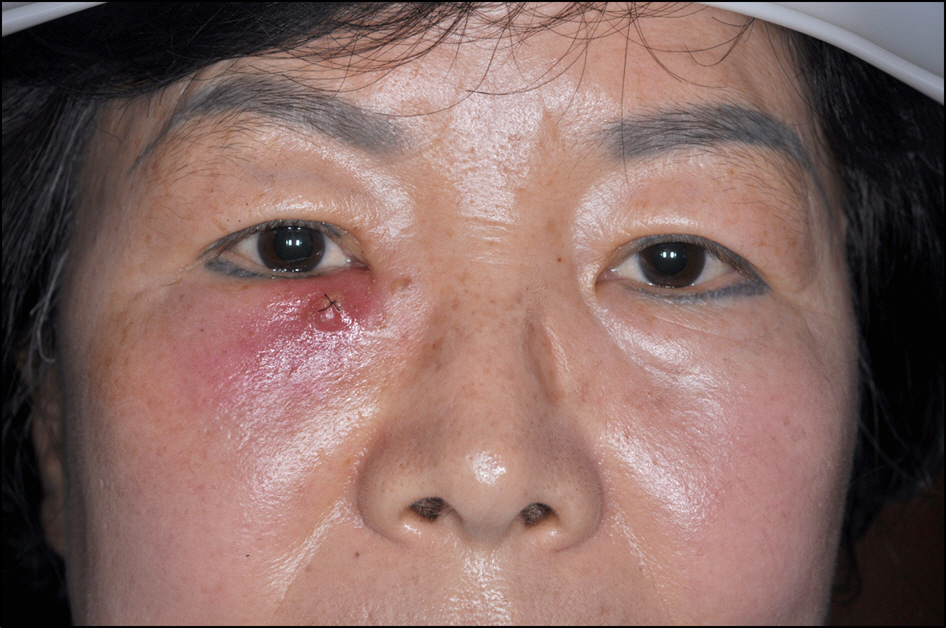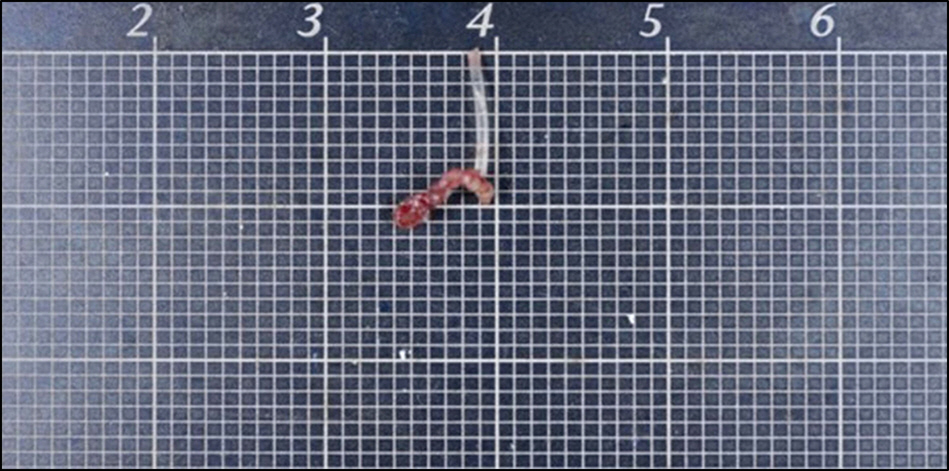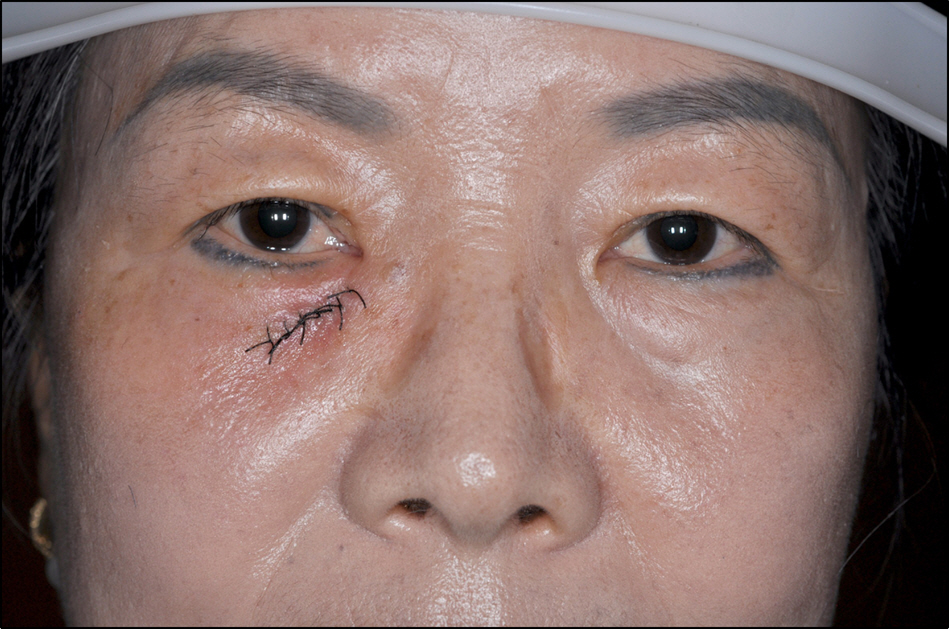J Korean Ophthalmol Soc.
2014 May;55(5):746-749. 10.3341/jkos.2014.55.5.746.
A Case of Acquired Lacrimal Fistula Caused by Silicone Tube Remnant
- Affiliations
-
- 1Department of Ophthalmology, Chosun University College of Medicine, Gwangju, Korea. master@smarteyes.co.kr
- KMID: 2218097
- DOI: http://doi.org/10.3341/jkos.2014.55.5.746
Abstract
- PURPOSE
To report a case of acquired lacrimal fistula caused by silicone tube remnant.
CASE SUMMARY
A 56-years-old female who suffered from purulent discharge in inner skin of the right lower eyelid visited our clinic. Lacrimal fistula was found in the skin at the medial side of the right lower eyelid. The patient reported that she had a silicone tube intubation operation 3 years prior due to a nasolacrimal obstruction of right eye. On syringing test, saline solution and purulent discharge were drained from the fistula skin opening and there was no nasolacrimal obstruction. After admission, antibiotic treatment and potadine soaking dressing were performed to facilitate spontaneous closing of the lacrimal fistula. However, the lacrimal fistula relapsed and lacrimal fistulectomy and bicanalicular silicone tube intubation were performed. During surgery, silicone tube remnant material not totally extubated at the lacrimal sac was found which we removed. Postoperatively, systemic antibiotic therapy was administered and the chronic inflammation improved.
CONCLUSIONS
We report a case of lacrimal fistula caused by silicone tube remnant in the lacrimal sac. Acquired lacrimal fistula caused by a silicone tube remnant can be treated by fistulectomy and silicone tube remnant removal.
MeSH Terms
Figure
Reference
-
References
1. Choi JS, Lee JH, Paik HJ. A silastic sheet found during endoscopic transnasal dacryocystorhinostomy for acute dacryocystitis. Korean J Ophthalmol. 2006; 20:65–9.
Article2. Lee TS, Woog JJ. Endonasal dacryocystorhinostomy in the pri-mary treatment of acute dacryocystitis with abscess formation. Ophthal Plast Reconstr Surg. 2001; 17:180–3.
Article3. Cahill KV, Burns JA. Management of acute dacryocystitis in adults. Ophthal Plast Reconstr Surg. 1993; 9:38–41.
Article4. Kim HH, Jeong BJ, Shin DS, et al. Treatment of the lacrimal fistula with punctal plug. J Korean Ophthalmol Soc. 2007; 48:589–92.5. Wu W, Yan W, MacCallum JK, et al. Primary treatment of acute da-cryocystitis by endoscopic dacryocystorhinostomy with silicone intubation guided by a soft probe. Ophthalmology. 2009; 116:116–22.
Article6. Morgan S, Austin M, Whittet H. The treatment of acute dacryocys-titis using laser assisted endonasal dacryocystorhinostomy. Br J Ophthalmol. 2004; 88:139–41.
Article7. Song BY, Ji YS, Wu MH, et al. The clinical manifestations and treatment results of congenital lacrimal fistula. J Korean Ophthalmol Soc. 2006; 47:871–6.8. Barrett RV, Meyer DR. Acquired lacrimal sac fistula after incision and drainage for dacryocystitis: a multicenter study. Ophthal Plast Reconstr Surg. 2009; 25:455–7.
Article9. Subbaiah S. Role of endoscopic dacryocystorhinostomy in treating acquired lacrimal fistulae. J Laryngol Otol. 2003; 117:793–5.
Article
- Full Text Links
- Actions
-
Cited
- CITED
-
- Close
- Share
- Similar articles
-
- Surgery for the Congenital Lacrimal Fistula
- Surgical Efficacy of Probing with Silicone Intubation for Lacrimal Apparatus Obstruction in Children
- Effect of Lacrimal Endoscopy on Operation Time in Silicone Tube Intubation for Nasolacrimal Duct Obstruction
- Successful Reposition of Prolapsed Silicone Tube Using Hole and Lacrimal Probe Method
- Silicone Tube Intubation with Lacrimal Endoscopy and Endonasal Dacryocystorhinostomy in Adult Nasolacrimal Duct Obstruction





